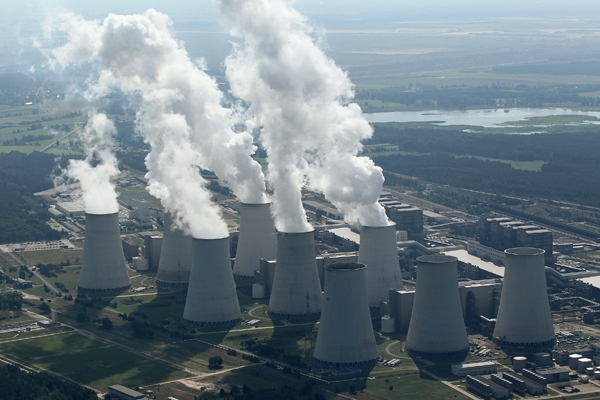Obama Takes 'War on Coal' Global

The Obama administration, after wielding its executive muscle to fight climate-change pollution from U.S. coal plants, is now using its influence to block new coal-fired power plants worldwide.
In September, the Environmental Protection Agency announced draft rules to slash pollution from new U.S. coal-fired power plants—a move that, once finalized, is expected to freeze construction of U.S. coal plants, the chief contributor to carbon pollution. On Tuesday, the Treasury Department detailed its plans for ending U.S. support for public financing of construction of new coal-fired power plants abroad, except under very limited circumstances.
The move comes as one of a series aggressive executive-branch actions being pushed by President Obama as he seeks to fight climate change without help from Congress. For years, Republicans and the coal industry have dubbed EPA regulation a “War on Coal”—and thousands of protesters rallied at the Capitol waving “War on Coal” signs Tuesday just as a senior Treasury Department official was briefing reporters on the administration’s plan to take the fight against coal from Washington to the world.
The official made clear that it’s the Obama administration’s intent to use every tool in its arsenal—both executive authority and its global influence—to push energy companies and investors away from coal and toward more climate-friendly fuel sources, including solar and wind, but also natural gas, which emits about half the carbon pollution of coal.
The U.S., which holds more votes than any other country in approving projects financed by the World Bank and other global financial institutions, can consistently vote against public financing for any new coal project. While the U.S. alone can’t veto the projects, with support from a few like-minded governments, it can. And the World Bank, which has also recently reoriented itself toward fighting climate change globally, is expected to be a willing partner in helping the U.S. achieve that goal.
Although the new move will only limit public financing for coal projects—which is a small slice of global energy investment—the Treasury official said the U.S. hopes the move will send a strong message to private investors about the viability of financing coal projects anywhere in the world.
“We believe that if public financing points the way, it will then facilitate private investment,” said Lael Brainard, Treasury’s undersecretary for international affairs.
The official said that Treasury will use its influence on public-financing projects to push development banks and key players in public investment in the direction of cleaner sources of energy. The hope, said the official, is to create a broader ripple effect—that when private investors see governments ending financial backing in coal, they’ll also be scared away.
The Treasury Department’s coal-plant guidelines are modeled after last month’s EPA rules. Those rules require that new coal plants built in the U.S. limit their emissions to less than 1,100 pounds of carbon pollution per megawatt-hour—slightly more than half the carbon pollution now produced by a typical coal-powered plant. The only way a coal plant owner could meet those requirements would be by installing expensive “carbon capture and sequestration” technology. While the technology, which traps carbon pollution and injects it underground before it spews out of smokestacks, is commercially available, it could cost power companies billions of dollars to install. Instead, it’s expected that power companies will simply invest in generating electricity from other, less-polluting forms of electricity, chiefly natural gas, which emits just half the carbon pollution of coal, but also wind, solar, and nuclear energy.
You can return to the main Market News page, or press the Back button on your browser.

